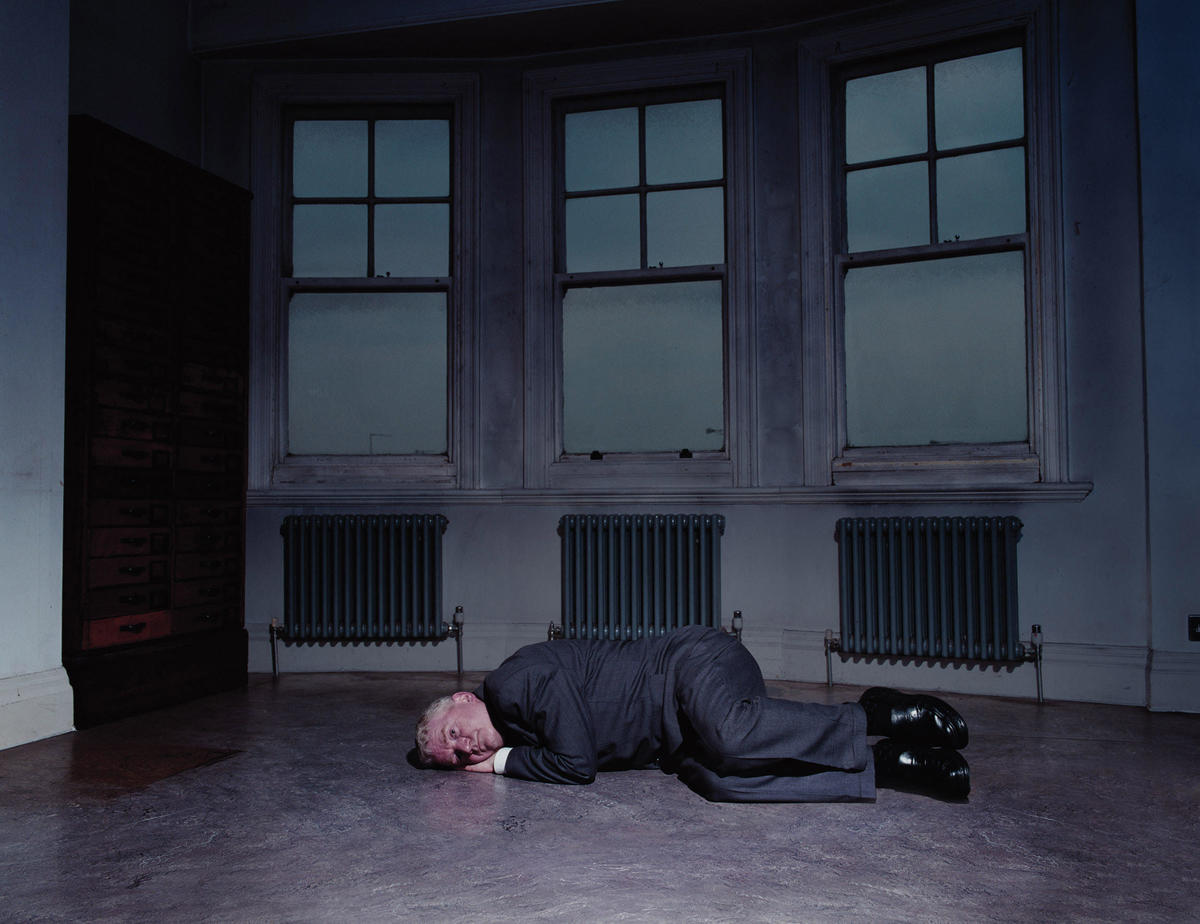
London
Mitra Tabrizian: This Is That Place
Tate Britain
June 3–August 10, 2008
The title of Mitra Tabrizian’s exhibition at Tate Britain, ‘This Is That Place,’ emphasized photography’s ability to eliminate distance, to bring Tehran to London and vice versa. Tabrizian’s early images, including Governmentality and College of Fashion, were staged tableaux that drew on psychoanalytically inflected film theory and were symptomatic of postmodern conceptual photography from the early 1980s. Divided into two rooms, the exhibition charted Tabrizian’s work from the beginning of her career through the late 1990s. Some of her pictures reflected on corporate culture; others were inspired by the writings of Jean Baudrillard. A recent body of work, Borders, featured large-scale portraits of Iranian exiles.
In the interview with curator Rose Issa in the accompanying catalogue, Tabrizian described her panoramic image Tehran 2006 as a response to Iranian cinema, its poetics of the everyday and its use of real people as opposed to professional actors. However, as TJ Demos pointed out in the catalogue’s foreword, there were many similarities between Tabrizian’s works and Jeff Wall’s photographs. Indeed, one would have been hard pressed to see exactly how Iranian artistic or cinematic practices figured into Tabrizian’s work, and this may have been the problem.
Her photographs of Iranian exiles were reminiscent of the heroic social realist paintings typical of Soviet art in the 1930s. Perhaps this was in keeping with the cross-cultural theme, previously examined by the art historian Peter J Chelkowski, of exchange between Iranian revolutionary art and Soviet socialist imagery. But what was of interest in ‘This Is That Place,’ given that it was a rare opportunity to see Tabrizian’s work, was the chance to assess the artist’s place within wider debates on photography’s role in postmodernism, drawing on popular culture and the production mechanisms that promote global capital in the privileged form of digital imagery.
In Tabrizian’s show, there were some familiar echoes of earlier preoccupations from the 1980s, including a series that evoked Michelangelo Antonioni by way of the filmmaker’s interest in the work of architect John Hejduk. However, Tabrizian’s captions, packed with theory, served as awkward explanations of otherwise compelling images. Given that contemporary viewers are probably quite familiar with the cross-fertilization between photography and film — and the narrative concerns of each genre that Tabrizian’s early work helped to pioneer — the expository wall texts were unnecessary. They also distracted from the details that the eye would otherwise gradually have sought out in a work such as Beyond the Limits (2000-01), which reframed the drama, found in early Tabrizian images influenced by film noir, to make it appear almost as a ghostly double to popular television’s obsession with criminal psychology.
Beyond the Limits reinforced the notion that digital photography is no longer indexed to the real. The surface, as Fredric Jameson noted, has been emptied of the psychological interiority that once gave modernism its direction. Andreas Gursky’s Atlanta (1996) indicated the uneasy spaces that digital photography has come to occupy, serving corporate culture and high art at the same time. One was left either in awe of his visual repetition of the production of capital as a kind of postmodern sublime, or so removed that one slid over the surface in a manner that suggested boredom.
In Beyond the Limits, one found the critical possibility that treating simulacra as a surface might create the occasion for a stage rather than a grid of representation that merely homogenized. Finding a falling figure trapped within the otherwise uniform lighting of an anonymous office block, one realized that that figure could also act as a decoy, a conceptual trap that appeared to show everything; only later did one discover that another event was concealed within the same frame.
The smaller scale of that particular image and of Silent Majority (2001) maintained a sense of private contemplation. These were perhaps the strongest of Tabrizian’s images, and they jarred with the more empathetic representations of aging businessmen. On the one hand, it was tough to feel compassion for CEOs. On the other, these works pointed something that was at stake in Tabrizian’s work: the poignancy of corporate executives being rendered redundant by capitalism’s fascination with the new and the young.